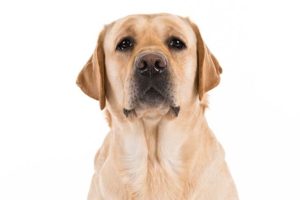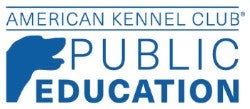
Common Core Standard
CCSS.MATH.CONTENT.4.G.A.3
Recognize a line of symmetry for a two-dimensional figure as a line across the figure such that the figure can be folded along the line into matching parts. Identify line-symmetric figures and draw lines of symmetry.
Learning Objective
Identify line(s) of symmetry in pictures of dog faces as well as shapes like hearts, rectangles, triangles, stars
Grade Level
Fourth Grade
Materials needed
Small hand mirrors
Graph paper
Printed copies of dog faces and polygons for folding
Lesson
Introduction
- Ask students what they already know about symmetry.
- Ask students for examples of symmetry in the human body. Students may point out the face, where there can be a vertical line of symmetry, or appear to be. You may want to point out that few humans have perfectly symmetrical faces, but that for the purposes of this lesson, the two eyes, two ears, and nose and mouth in the center can be seen as symmetrical. Additionally, the two sides of the body can be seen as symmetrical with arms, hands, legs, feet balancing each other across a vertical line of symmetry. Some students may also note that the lungs are symmetrical, as well as the kidneys.
Explicit Instruction/Teacher Modeling
- Ask students where the line of symmetry is in the human body. Now is a good time to review the terms vertical and
- Help students remember the meanings of these terms by having them create a vertical line with their arm when saying the word “vertical” and a corresponding horizontal arm motion when saying “horizontal.”
Independent Work
- Students experiment with placing the hand mirrors in different places on the dog faces and polygons to find all the lines of symmetry.
- Students can also fold the images to see where lines of symmetry are.
- Students sort the images into two groups: Symmetrical and Not Symmetrical. Students should be prepared to explain why each image is in its group, and to demonstrate all lines of symmetry for the images in the Symmetrical Group.
- This can lead to a rich discussion of what constitutes mathematical symmetry, and what does not, since some of the dog photos are slightly off center.
Review and Closing
- Show the image below and ask students to tell you if it is symmetrical and ask them to explain why or why not, as well as where any line(s) of symmetry are.

*Teacher Tip: a good way to ensure all students participate in class discussions is to pull student names randomly, either by writing student names on index cards or popsicle sticks or using a random name selector app on your phone. That way students know they don’t need to volunteer because they will all get chosen to speak at some point. Students know they may get called on when they don’t know an answer, so they’ll need to have reasoning to support their guess.
Resources
Dog Breeds. (n.d.) Retrieved from https://www.akc.org/dog-breeds/


